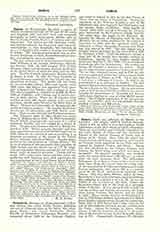

Samoa (or NAVIGATORS’ ISLANDS), a group of islands situated in latitude 13° 30′ and 14° 30′ south and longitude 168° and 173° west, and composed principally of fertile mountainous islands, such as Savai’i, Upolu, Tutuila, Manu’a, of volcanic and coral formations. The natives are tall, muscular, hardy, and fearless seafarers, but ferociously cruel (formerly cannibalistic) in war; hospitable, but indolent in peace; of dignified and courteous bearing, and skilled in debate. The aboriginal government was an aristocratic federation of chiefs, chosen from certain families, controlling the royal succession.
The first mission work in these islands was done by John Williams, of the London (Protestant) Missionary Society, 1830. In 1836 Gregory XVI divided Oceanica (which includes Samoa) between the Society of the Sacred Hearts of Jesus and Mary and the Marists. The First Catholic missionaries, Marists, landed in Samoa in 1845. In 1851 the Vicar Apostolic of Central Oceanica appointed by Pius IX was also Administrator of Samoa. This double title was borne by the succeeding bishops, Elloy and Lamaze, until 1896, when Msgr. Broyer was appointed Vicar Apostolic of Samoa and Tokelau, with residence at Apia. The total population is estimated at 37,000, of whom 7500 are Catholics, with 1 bishop and 21 priests, several of them natives. There are 17 churches with resident pastors, 100 chapel stations under married catechists, schools under Sisters of the Third Order of Mary. Divorce and immorality are the principal obstacles to Catholic progress. The London Missionary Society has 12 missionaries and 8658 church members. There are also Mormon and Wesleyan missions.
The European name of these islands was given them by Bougainville in 1768. In 1872 Commander Meade, U.S.N., negotiated the concession of a coaling station in Tutuila; this was ratified by a treaty in 1878. Treaties with Germany and Great Britain followed in 1879. Native dynastic disorders and consular aggressions necessitated the Berlin Conference of 1889, between the interested powers, resulting in a tripartite government of the islands by the United States, Germany, and Great Britain. Popular disapproval in the United States of “foreign alliances” led to the dissolution of this agreement and a partition, in 1899, Tutuila and the islands east of 171° W. longitude passing under American control, the rest to Germany, under an imperial governor. Tutuila still remains (1911) under native chiefs and laws (when not conflicting with American law), with supervision by the commandant of the United States Naval Station.
W. F. SANDS

